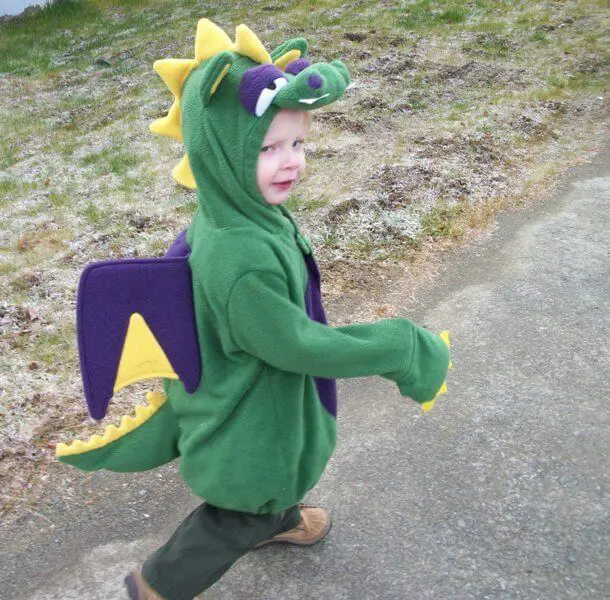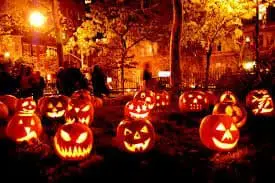Being an Alaskan resident, trick or treating with the kids on Halloween and picking out costumes prior to the big event takes on one extra-chilly challenge: keeping kids warm. An average Halloween evening in south central Alaska is anywhere from -8 to 51 degrees Fahrenheit, and snow is a common candy companion. With some of the warmer lower-48 states now receiving some of our cold weather, it seemed an appropriate time to share my cold weather knowledge and offer tips from costume selection to candy collecting in an effort to keep you and your kids warm this Halloween.
Picking costumes for keeping kids warm on Halloween:
The first step to keeping kids warm on Halloween is to select a costume that either allows for extra clothing and weather protection or integrates such items into the costume. For example, say your child is a Jedi from Star Wars. This costume uses a robe that can either be thick and weather appropriate or warm clothing can be worn below it without ruining the costume. Cloaks and robes make a very simple way to make most costumes warmer, being appropriate for witches, vampires, knights, princesses, and much more.
Another trick is simply to buy or make your costume slightly larger than needed so layers of clothing or coats can be worn beneath. Layering is one of the best ways to stay warm in cold weather. Even costumes you wouldn’t think could be warm can be with layers. In example, say your child wants to be a ballerina. Normally, this costume would result in a frozen kid, but place thermal long johns below the costume, use thick stalkings rather than tights, and add some warm but very cool long gloves and you’re set.
You can even use shoe covers to make warm boots look costume appropriate. It’s also a good idea to keep costumes waterproof as much as possible. Placing some plastic bags between socks and shoes helps keep feet dry and warm and you can opt for a clear rain poncho if needed.
Keeping kids warm while trick or treating on Halloween:
Beyond dressing your kids (or kid) in warm costumes, you can also take steps to keep them warm during the actual trick or treating on Halloween. One commonly used method in Alaska is short-burst treating. This method entails trick or treat for a while, going somewhere out of the cold to warm up, and then continuing.
For example, you can park at the front of a street and have the kids go down one side, up the other, and then get back in the car. You can also do this using home as a base rather than a car. When kids arrive back at the warm base, so to speak, offer warm drinks such as cocoa or apple cider. Indoor apartment complexes can provide an alternative to this method as you can continue trick or treating and be inside a building rather than out in the cold.
Sending your kids out with hand warmers often used for cold weather fishing or hunting (that’s the section you’ll find them in at your local store) can also help warm cold little fingers. Remember to ask your child often if they are cold, if they are younger you may even consider just grabbing a hand and giving it a feel. You can always go home, warm up, and trick or treat some more later.
You may also enjoy:



